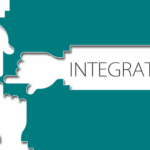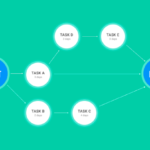Ideas are the first step for any business, like new products, marketing methods, and ways to make more money. The hard part is making those ideas come to life. Many times, companies are trapped in a rut where they come up with good ideas but can’t carry them out. When there is no framework, creativity turns into a lot of notes that don’t make sense, priorities that aren’t in order, and hours that are wasted. To narrow this gap, businesses need more than simple communication apps. They also need project management tools that keep things moving forward without sacrificing speed.

Platforms like Lark are redefining how ideas go from being thought of to being sent out. They connect planning, scheduling, communication, and execution in one system to make sure that creativity doesn’t get lost in talk. In this way, it becomes results that matter.
Lark Base: Building clarity into every project
No matter how excellent a concept is, it will only have an effect if it is managed correctly. Lark Base makes things obvious by giving you a configurable foundation that lets you see, follow, and alter projects in real time. Spreadsheets that can’t be changed don’t have to be used by teams. They can utilize kanban boards to keep track of how things are progressing, gallery views for creative work, or schedules to make sure that projects are finished on time.
Imagine a group of salespeople getting ready to sell a new product. Base helps them to set up a smart database or an instant CRM app to keep track of leads, conversations, and the journey each client goes through marketing or product tasks. The product team also maintains track of release milestones in the same Base environment, which helps everyone stay on the same page. This isn’t just a tool to keep track of projects; it’s a live ecosystem where possibilities, progress, and responsibilities are always clear.
Lark Calendar: Keeping momentum through shared schedules
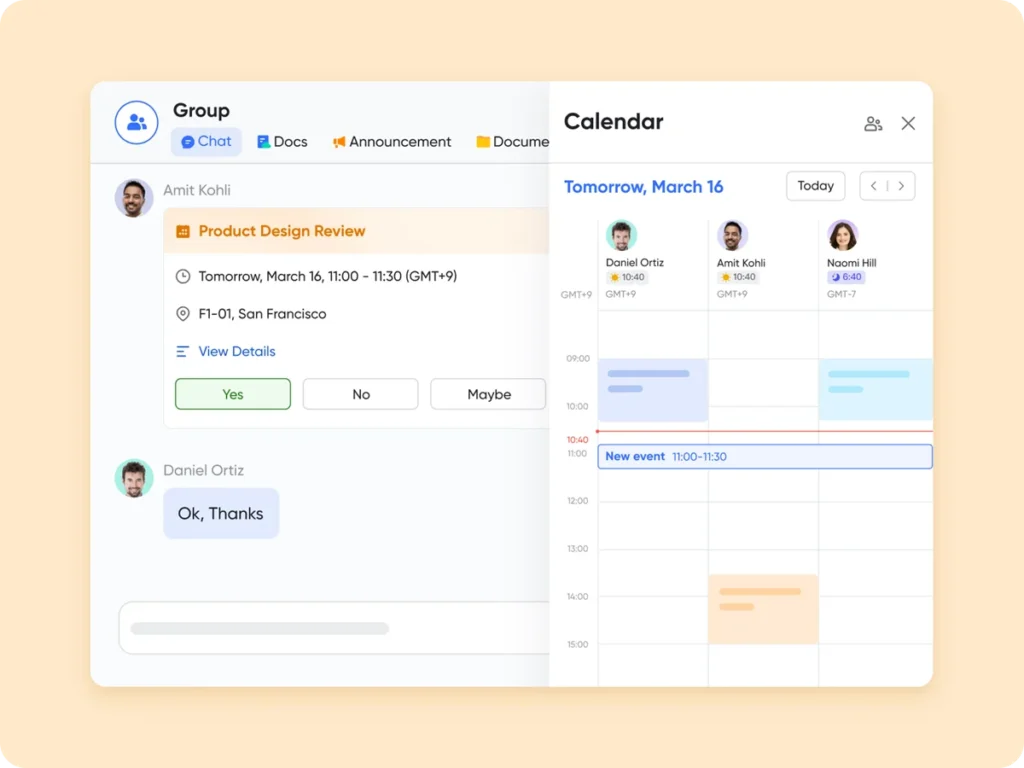
Great ideas don’t work out when time isn’t managed well. Deadlines are moved back, meetings are canceled, and chances are lost. Lark Calendar helps stop this by making it so that everyone in the group is responsible for managing their own time. With automatic time zone changes, it’s easy for teams all across the world to work together and see when each other is free.
Think of a group of people who are all working together from different places to build a campaign. They might be able to see a shared calendar that automatically shows milestones from Base, so they don’t have to keep going back and forth. When entering the event details in Calendar, the meeting host can add the campaign Doc hyperlink into the meeting description so that everyone is on the same page. Reminders help individuals remember deadlines, and activities that happen on a regular basis make check-ins more useful. Calendar helps you make the most of your time by making sure that schedules help, not impede, the progress of a project.
Lark Messenger: Connecting people to purpose
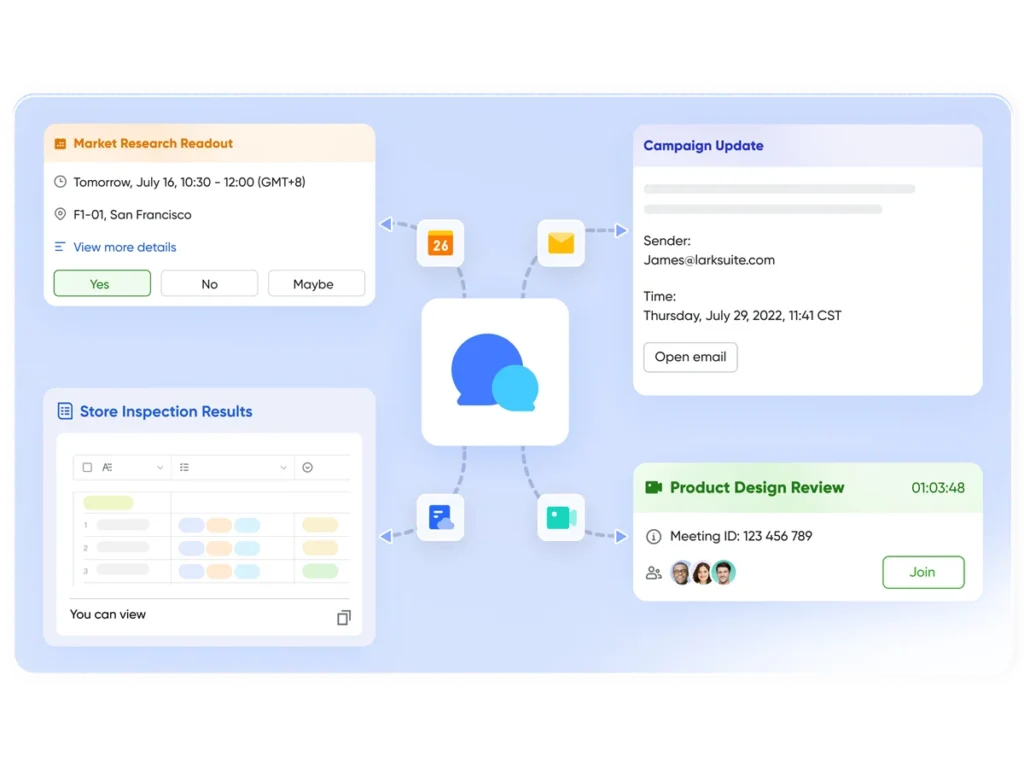
Most ideas originate with chats, but they might get lost in long threads or apps that are only for one person. Lark Messenger makes talks useful by letting you do something with them right away. You don’t have to keep a suggestion made in a group conversation there. It can quickly become a task, a calendar event, or a note that is linked to something else.
The design team is getting together to talk about what a consumer said over the phone. They don’t have to leave the chat to speak about modifications in Messenger, turn the essential points into new tasks, and attach the new Doc draft. This keeps the conversation going and makes sure that the topic is so intense that it leads to advancement straight away. Messenger isn’t so much about communicating as it is about making sure that every word has meaning.
Lark Docs: Shaping information into shared intelligence
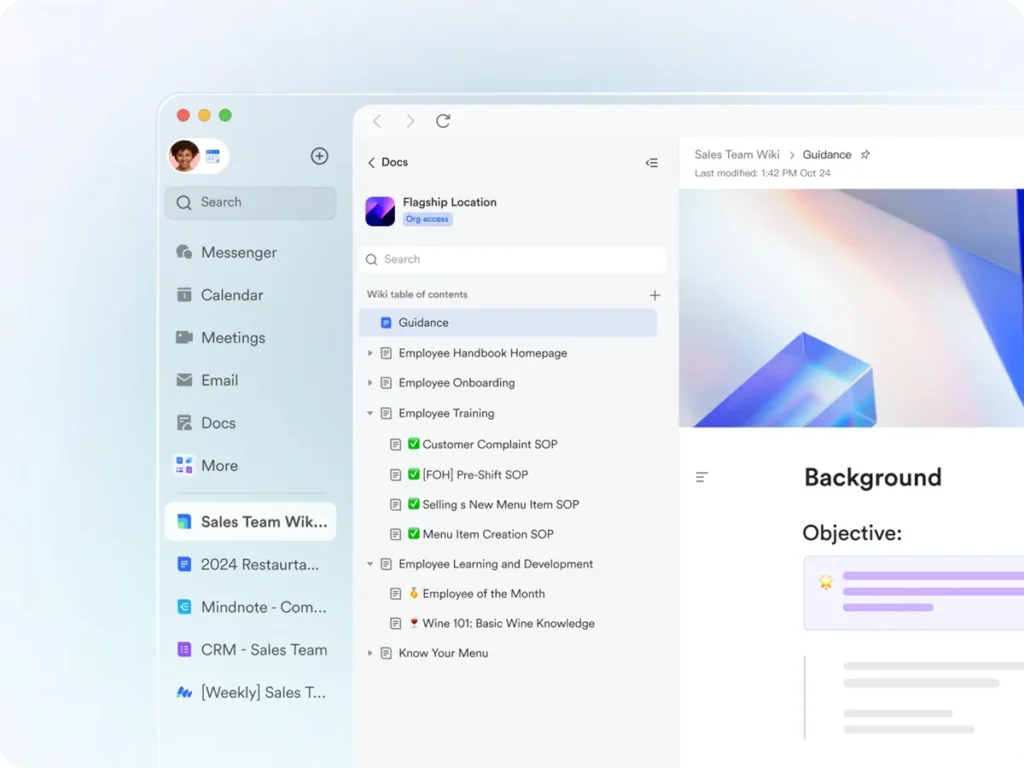
You couldn’t remember ideas that merely came up in conversation. Lark Docs turns them into organized, changing information. Real-time changes, in-line comments, and embedded visualizations make it so that docs are continually changing. This is not the same as files that never update. This makes it easy to obtain knowledge and makes it helpful.
A strategy workshop can start with a simple plan, for instance. Within hours, people from different departments work on the same document, add charts to back it up, and mark action items. That Doc then links directly to the tasks in Base or the Calendar meeting where the review will happen. Docs makes sure that institutional memory helps things go forward instead of just hanging around and collecting dust by connecting documents to actions.
Lark Meetings: Making collaboration decisive
Meetings may either help things move forward or slow them down. Lark Meetings makes sure of the first by turning talks into concrete results. By clicking on Calendar or Messenger, teams may quickly join and work together in real time. As they talk, they can change Docs or add new records to Base.
This is a great example of how powerful this is: a weekly sprint planning meeting. Developers and managers talk about what has to be done, write down their notes, and assign follow-ups in Tasks. You can still get recordings and transcripts after the fact, so no information is lost. You can even set up routines like status updates or reminders to follow up that happen on your own. This is where an automated workflow really shines: it handles boring activities in the background so that teams can focus on getting things done instead of how to do them.
Lark Tasks: Anchoring accountability in execution
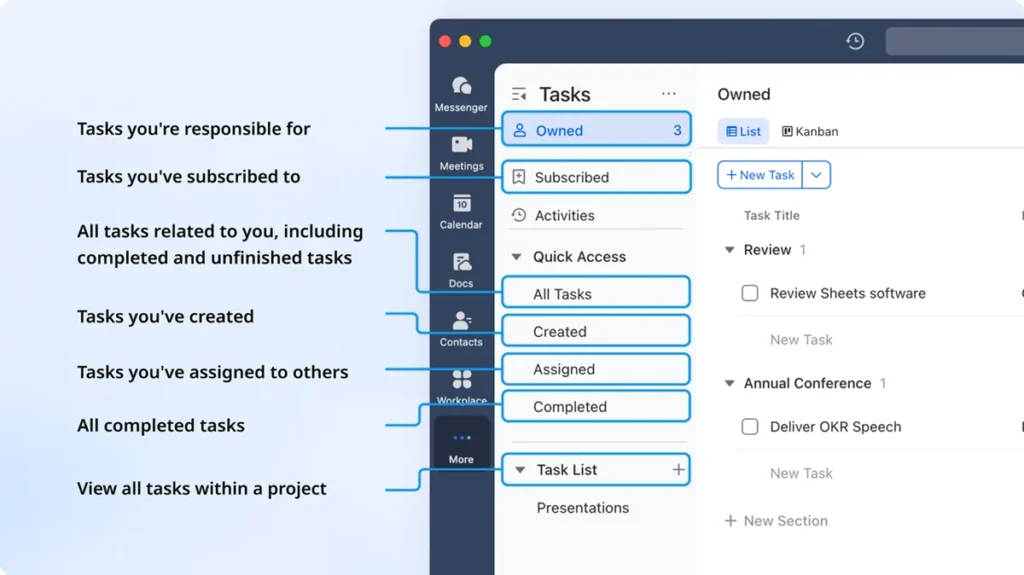
Every idea needs to be put into action, and Lark Tasks help keep people accountable. Putting all the talks, schedules, and projects in one location makes it easier for teams to stay on track and not become confused.
For example, a marketing manager may look at how well a campaign did. When participants submit feedback over Messenger or in a meeting, they are given projects with clear due dates. In Base, these tasks are linked to project records, which helps them stay on track with their wider goals. People can use personal dashboards to decide what to do first each day, and supervisors can observe how things are going in general. Tasks turn the imprecise “to-do” into a genuine promise that keeps projects on track.
Conclusion
You don’t need to work harder to make your ideas have an effect. You just need to structure your work so that your imagination and execution work together seamlessly. Too many firms lose their drive because they don’t have clear ways to make decisions, manage their time, or take responsibility for their actions. Lark and other unified systems change that by connecting all the pieces of labor into one smooth flow.
Base provides things structure, Calendar keeps everyone on the same page, Messenger makes discussions useful, Docs turn information into action, Meetings make sure decisions lead to follow-ups, and Tasks make sure people are responsible. These elements work together to get rid of the locations where good ideas usually get trapped.
So, old notes and emails that are all over the place don’t lose their inventiveness. Instead, it turns into real progress and accomplishments that can be tracked. The real power of utilizing linked technologies to coordinate work is that they make people work together more and get more done.


